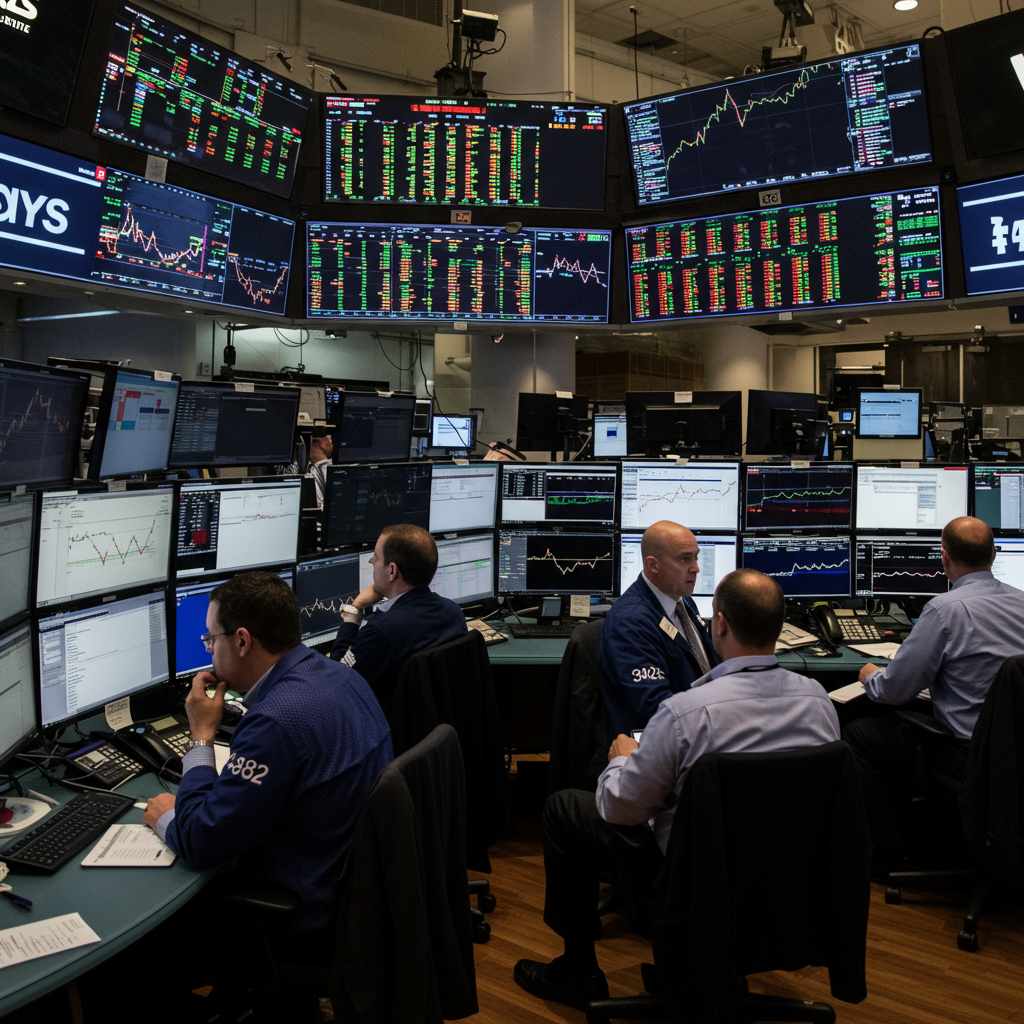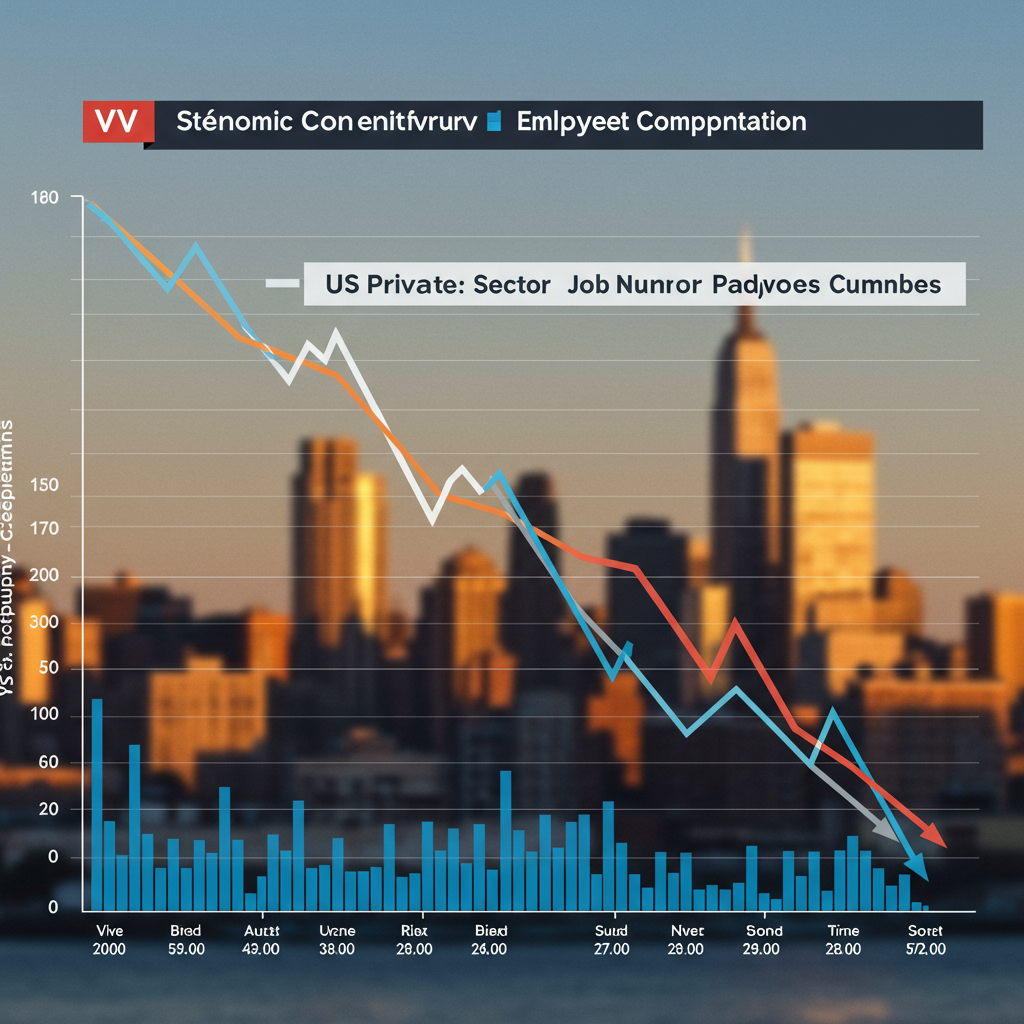Global markets are currently experiencing significant shifts as investors weigh the implications of escalating trade tensions. The latest wave of rhetoric from the White House regarding potential new tariffs, particularly targeting key sectors like copper and pharmaceuticals, has introduced fresh uncertainty into the financial landscape. This period of cautious assessment is leading to varied performance across major indices, highlighting the sensitive nature of global trade policy on investor sentiment and commodity prices.
Decoding market Performance Amidst Trade Tensions
The immediate reaction across worldwide equity markets has been notably mixed. While some regions have shown resilience, others reflect the prevailing apprehension. This divergence underscores the complex impact of trade disputes, which can affect different economies and sectors unevenly based on exposure and existing vulnerabilities.
S&P 500’s Cautious Stance
Futures contracts for the benchmark S&P 500 index in the United States saw minimal changes. This indicates a pattern of modest price movements for the second consecutive trading session. Investors appear to be holding back, assessing the potential reach and severity of the proposed tariff actions before committing to larger positions. The lack of a strong directional move suggests market participants are waiting for clearer signals or further developments from Washington. This period of consolidation could precede more significant volatility once the tariff situation gains more clarity or new data emerges.
European Equities Defy Uncertainty
In contrast to the hesitant performance in the US, European stock markets demonstrated positive momentum. A key gauge tracking European equities rose by half a percent, reaching its highest point in nearly a month. This upward movement suggests that investors in Europe may either be less exposed to the specific sectors targeted by the latest tariff threats or are perhaps finding other domestic economic drivers to support valuations. The relative strength in Europe could also reflect a rotation of capital as investors seek opportunities away from potentially impacted regions or sectors elsewhere.
Asia’s Mixed Signals and Downward Pressure
Markets across Asia presented a more subdued picture, with a broad index for Asian equities showing a slight decline. Asian economies are often heavily involved in global supply chains and are frequently central players in international trade dynamics. The renewed focus on tariffs from a major trading partner like the United States naturally introduces significant headwinds. This slight dip reflects caution and potential preemptive selling as traders anticipate potential disruptions to trade flows and economic activity across the continent. Performance varied within Asia, with some markets holding steady while others experienced more pronounced drops depending on their specific economic structures and trade relationships.
Copper’s Steep Retreat Explained
Among commodities, the price of LME copper experienced a notable decline, falling by as much as 2.4% in London. This followed a similar retreat of 2.4% in New York trading after a significant surge the previous day. Copper is widely regarded as an indicator of global economic health due to its extensive use in industrial applications and construction. A sharp drop like this often signals concerns about future industrial demand, which could be negatively impacted by trade barriers and economic slowdowns resulting from escalating tariffs. The metal’s price volatility, including the preceding large jump and subsequent fall, underscores the high level of uncertainty currently influencing commodity markets tied to global manufacturing and infrastructure.
Why Tariffs Target Specific Sectors
President Trump’s specific mention of potential new charges on copper and pharmaceuticals highlights strategic areas of focus for trade adjustments.
Copper: An Industrial Bellwether
Targeting copper directly impacts industrial production and development worldwide. As a critical component in manufacturing, construction, and renewable energy technologies, tariffs on copper imports can increase costs for businesses, potentially slowing down projects and reducing demand. Such a move could be aimed at protecting domestic producers or exerting economic pressure on exporting nations heavily reliant on copper sales. The significant price reaction in the market demonstrates the sensitivity of this commodity to trade policy shifts.
Pharmaceuticals: Healthcare and Innovation
Including pharmaceuticals in potential tariff discussions introduces complexities related to healthcare costs, global supply chains for medicines, and intellectual property. Tariffs on pharmaceuticals could be intended to pressure countries regarding drug pricing, market access, or the location of manufacturing facilities. However, this also raises concerns about potential impacts on the affordability and availability of essential medicines for consumers. The pharmaceutical sector operates through intricate global networks, making it particularly vulnerable to disruptions from trade barriers.
Investor Sentiment and Future Outlook
The current market environment is heavily influenced by uncertainty stemming from the unpredictable nature of trade policy announcements. Investors are grappling with how to price in the potential economic impact of new tariffs, which could range from increased costs for businesses and consumers to disruptions in supply chains and altered demand patterns.
Analysts are closely watching for further details on the scope and timing of any proposed tariffs. The lack of concrete information often fuels volatility as markets react strongly to rhetoric and speculation. Experts suggest that until there is greater clarity on the specific products, tariff rates, and implementation timelines, market sentiment is likely to remain cautious. This ‘wait-and-see’ approach is evident in the mixed market performance observed globally.
Navigating this period requires careful consideration of potential risks and opportunities across different sectors and geographies. The differing reactions in Europe, Asia, and the US highlight the importance of understanding regional economic exposures and market dynamics.
Navigating Volatility: What Investors Should Consider
Periods of heightened market volatility driven by geopolitical or trade tensions can be challenging for investors.
Here are some points to consider:
Stay Informed: Keep abreast of official announcements and reputable analysis regarding trade negotiations and proposed tariffs. Information flow is critical during uncertain times.
Assess Portfolio Exposure: Understand how your current investments might be affected by tariffs on specific sectors (like industrials, materials, or healthcare) or regions.
Consider Diversification: Ensure your portfolio is adequately diversified across different asset classes, sectors, and geographic regions to help mitigate risks concentrated in potentially vulnerable areas.
Long-Term Perspective: Avoid making hasty decisions based solely on short-term market fluctuations. Focus on your long-term financial goals and investment strategy.
- Consult an Advisor: Discuss how trade tensions might impact your specific financial situation and investment plans with a qualified financial advisor.
It’s important to remember that markets can react sharply to news, but the fundamental long-term value of investments is often driven by broader economic trends and company performance rather than temporary political events.
Frequently Asked Questions
What specific sectors did President Trump target with new tariff threats?
According to recent reports, President Trump has escalated his trade rhetoric and specifically threatened to impose new tariffs on imports related to copper and pharmaceuticals. These sectors represent critical components of global industry and healthcare supply chains, making them sensitive areas for trade policy adjustments. Targeting copper could impact industrial production, while focusing on pharmaceuticals raises questions about medicine costs and availability.
Where can investors find official details on the latest US tariff proposals?
Official details regarding US tariff proposals and trade actions are typically announced by the Office of the United States Trade Representative (USTR) and the White House. Government websites, including USTR.gov and whitehouse.gov, are primary sources for official statements, notices, and documentation related to trade policies and proposed duties. Investors should consult these official channels for the most accurate and up-to-date information on potential tariff implementations.
Should investors make portfolio changes based on recent market volatility from tariff news?
Market volatility stemming from tariff news often reflects short-term uncertainty rather than long-term fundamental shifts. While it’s crucial for investors to assess their portfolio’s exposure to potentially impacted sectors or regions, making impulsive changes based solely on headline-driven volatility is generally not recommended. Focusing on long-term investment goals, maintaining diversification, and consulting with a financial advisor to understand the potential impact on your specific situation are more prudent approaches than reactive trading.
Conclusion
The current global market landscape is undeniably shaped by the ongoing uncertainty surrounding international trade policies. President Trump’s latest tariff rhetoric has injected a fresh dose of caution, leading to mixed performance across major stock indices and a notable decline in key commodities like copper. While European markets showed strength, Asian equities edged lower, and the S&P 500 remained subdued. This period highlights the delicate balance of global trade and its immediate impact on financial markets. Investors are advised to remain informed, understand their portfolio’s exposure, and maintain a long-term perspective while navigating this environment of elevated volatility and trade-related uncertainty.



